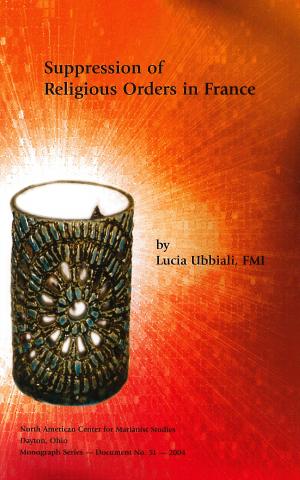by Sister Lucia Ubbiali, FMI
180 pgs.
Monograph #51
Sister Lucia situates the struggles of the Institute of the Daughters of Mary Immaculate not only in the historical perspective of the French government’s repressive attitude towards religious institutes, she also deals with the consequences of these attitudes. Relying on interviews and archival material, Sister Lucia objectively reports the failings and mistakes unavoidable when anyone is forced to grapple with laws and attitudes that threaten an institute’s very survival and, by extension, one’s own “survival” or way of life. Another interesting part of this history describes the providential merger of the Third Order of Auch, a merger that assured the survival of the Daughters of Mary.

